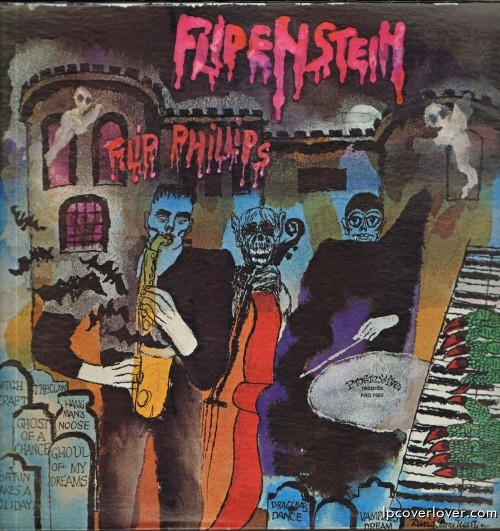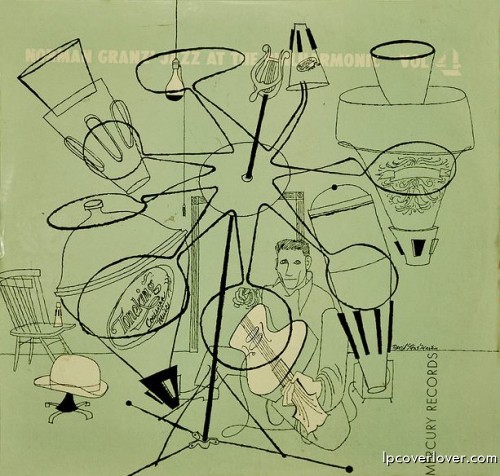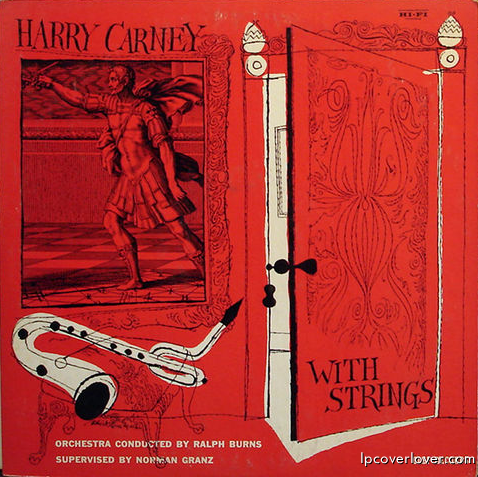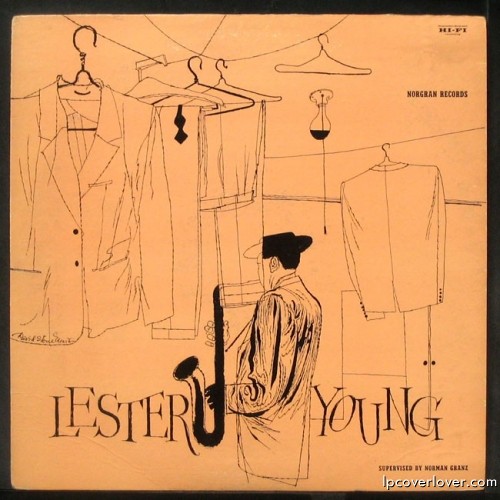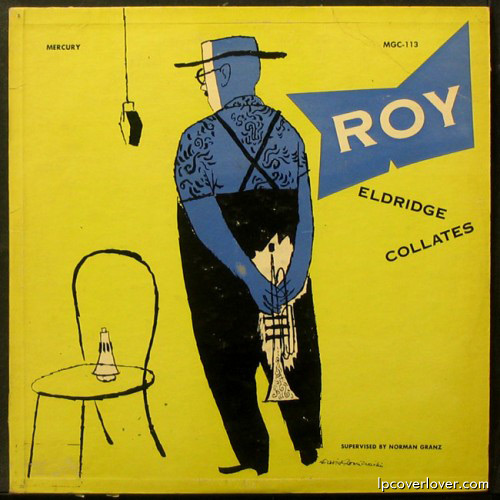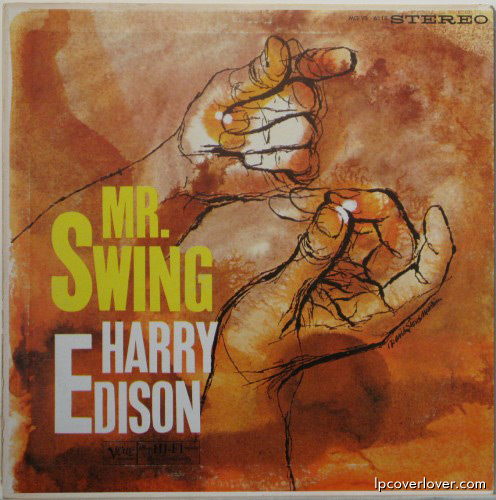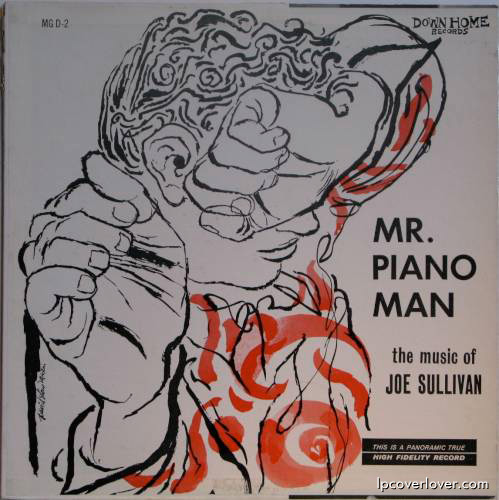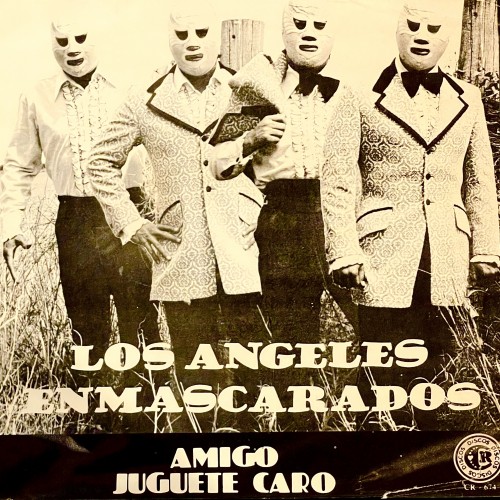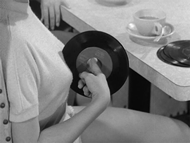David Stone Martin
You are currently browsing the archive for the David Stone Martin category.
Flip’n awesome
A late career cover illustration from David Stone Martin (1981) for the Flip Fhillips album “Flipenstein” on Progressive Records The titles of the eight songs all have something to do with monsters of one sort or another. Three standards — “Satin Takes a Holiday,” “Witchcraft” and “Ghost of a Chance” — are joined by five tunes written by Phillips; Vampire’s Dream,” “Dracula’s Dance,” “Ghoul of My Dreams,” “Hangman’s Noose” and “The Claw.”
Invitation to the Blues
A early David Stone Martin cover (a 1950 reissue of the 1946 original 78 RPM set on DISC Records from 1946). Norman Granz’ Jazz at the Philharmonic Volume #4 Mercury Records From a 1944 concert featuring Jack McVea, Illinois Jacquet (tenor saxes), J. J. Johnson (trombone), “Shorty” Nadine [Nat King Cole] (piano), Johnny Miller (bass), Les Paul (guitar), Lee Young (drums)
“Blues”, a simply titled three-part jump blues running for over ten minutes, was the highlight of the first “Jazz at the Philharmonic” concert, at Los Angeles’ Philharmonic Auditorium on Sunday afternoon, July 2, 1944, because of Illinois Jacquet’s honking and screaming tenor sax solo on Part 2 and the humorous piano and guitar chase sequence by Nat King Cole (billed “Nadine” Shorty on the record label for obvious contract reasons with Capitol Records) and Les Paul on Part 3. In addition, it has fine solos by R&B tenor saxist Jack McVea nd a young J.J. Johnson on trombone on Part 1, all driven by an irrestible rhythm section, consisting of Johnny Miller, then bassist of the King Cole Trio, and Lee Young, Lester Young’s drumming brother, besides Nat Cole and Les Paul.
“Lester Leaps In”, although not the definitive JATP version of the tune (Lester Young is missing), is played with a similar attitude, showcasing some excellent solos (another tenor sax outburst of Jacquet among them) in front of the driving rhythm for over nine minutes. Via.
Sweet and low
Harry Carney with Strings (1954) Clef Records Arranged by Ralph Burns. Cover illustration by David Stone Martin! Carney on baritone and bass clarinet with fellow Duke Ellington sidemen including: Ray Nance on trumpet and violin; Tony Miranda on French horn; Jimmy Hamilton on clarinet and tenor sax; Leroy Lovett on piano; Billy Bauer on guitar; Wendell Marshall on bass; and Louie Bellson on drums. (You won’t find this album if you search for it by its original title. That’s because its tracks have been folded into a Ben Webster CD called Music for Loving. The last eight tracks on the second disc make up the Carney album.
O’Day oh!
Anita O’Day “Collates” CLEF Records (Produced by Norman Granz) (1953) A 10 inch LP containing a compilation of eight previous singles. Re-released as Anita O’Day by Norgran Records in 1955 and with four additional tracks as The Lady Is A Tramp on the Verve label in 1957. A classic David Stone Martin illustration.
Groove is in the art
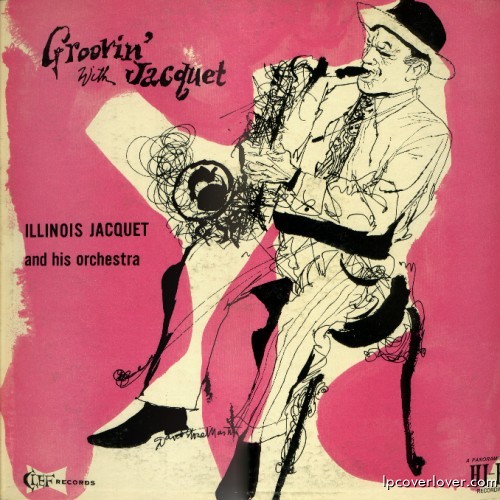
A prime example of David Stone Martin at his best! “Groovin with Jacquet” (1955) Illinois Jacquet and his Orchestra Clef Records (MGC 676) Also issued on Verve MGV 8061 entitled “Illinois Jacquet And His Orchestra“.
Harry “Sweets” Edison (tp) Illinois Jacquet (ts) Carl Perkins (p) Gerald Wiggins (org) Irving Ashby (g) Curtis Counce (b) Al Bartee (d)
Includes tasty standards like “Love is Here to Stay”; “East of the Sun”; “Stardust”; “Learnin’ the Blues”; and “Honeysuckle Rose.”

Roy “Little Jazz” Eldridge
Roy Eldridge “Collates” Mercury Records (Supervised by Norman Granz) Illustration by David Stone Martin.
Instead of other Collates series, this album is NOT a collection of Roy Eldridge’s previously-released 78rpm/45rpm single tracks, but two different sessions aimed for this LP album.
Roy Eldridge (tp) Buddy Tate (ts) Teddy Brannon (p) Clyde Lombardi (b) Charlie Smith (d) NYC, August, 1951
| 579-6 | Baby, What’s The Matter With You? |
| 580-6 | Yard Dog |
| 581-3 | Sweet Lorraine |
| 582-5 | Jumbo The Elephant |
Roy Eldridge (tp) George Williams (dir) unidentified orchestra NYC, December, 1951
| 644-6 | Basin Street Blues |
| 645-2 | I Remember Harlem |
| 646-4 | Easter Parade |
| 647-3 | I See Everybody’s Baby |
** also issued on Clef MGC 113
Snap your fingers
“Mr. Swing” Harry “Sweets” Edison Verve Records I admit it. I love Sweets! Can’t get enough. Illustration by David Stone Martin. Here’s a classic Sweets Edison. This and the Verve album “The Swinger”, both recorded during the same 1958 session has tenor saxophonist Jimmy Forrest joining Edison in the quintet’s frontline while pianist Jimmy Jones, bassist Joe Benjamin, drummer Charlie Persip, and rhythm guitarist Freddie Greene make up the rhythm section. (You can get both LP’s on a single Verve CD.) Edison (who died of prostate cancer on July 27, 1999, at 83 years of age) was one of the acknowledged masters of swing trumpet. His trumpet was a recognizable voice in the Count Basie Orchestra from 1938 until it broke up in 1950. During that period, he was featured on many records, appeared in the 1944 short “Jammin’ the Blues” and gained his nickname “Sweets” (due to his tone) from Lester Young. In the 1950s, Edison toured with Jazz at the Philharmonic, settled in Los Angeles, and was well-featured both as a studio musician (most noticeably on Frank Sinatra records) and on jazz dates. He had several reunions with Count Basie in the 1960s and by the ’70s was often teamed with Eddie “Lockjaw” Davis; Edison also recorded an excellent duet album for Pablo with Oscar Peterson. One of the few swing trumpeters to be influenced by Dizzy Gillespie, Sweets led sessions through the years for Pacific Jazz, Verve, Roulette, Riverside, Vee-Jay, Liberty, Sue, Black Blue, Pablo, Storyville, and Candid among others. Although his playing faded during the 1980s and ’90s, Edison could still say more with one note than nearly anyone.



 (13 votes, average: 4.23 out of 5)
(13 votes, average: 4.23 out of 5)